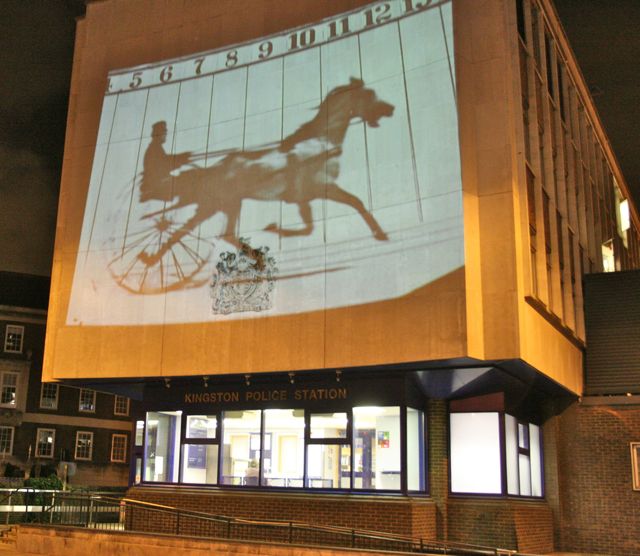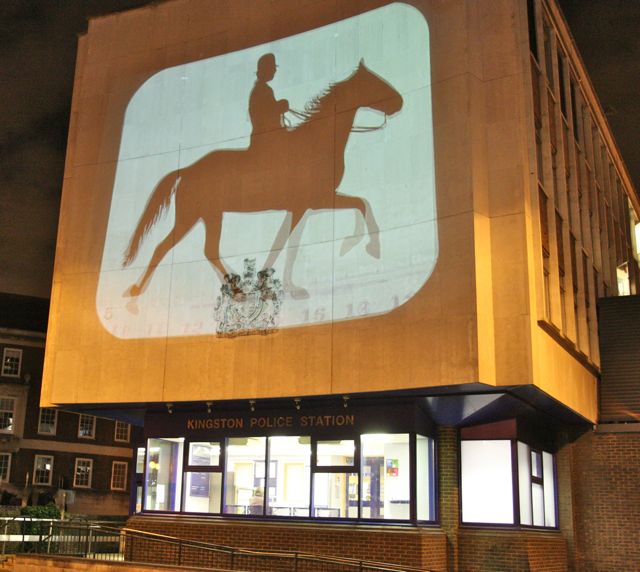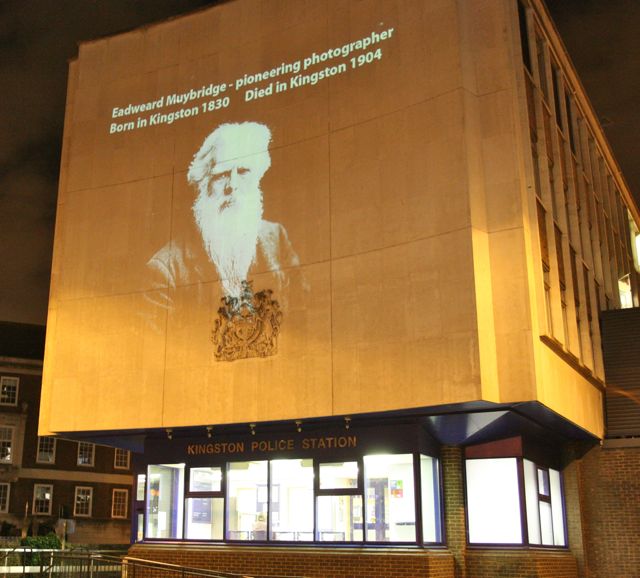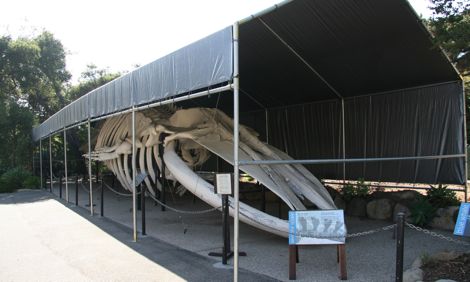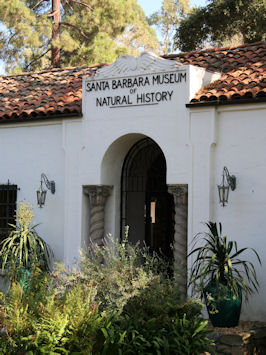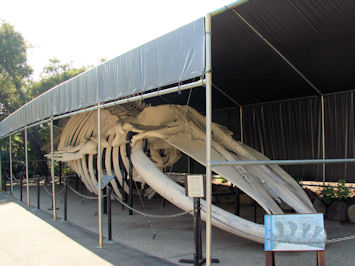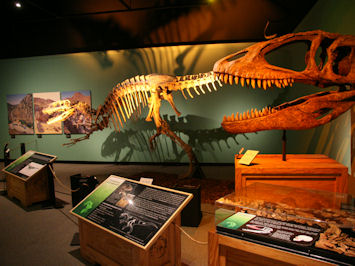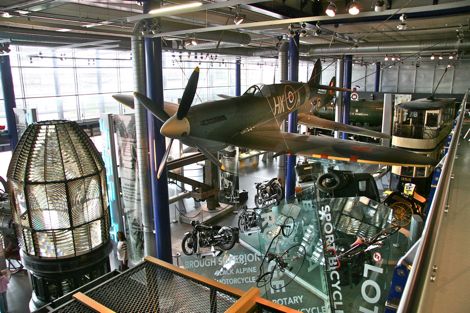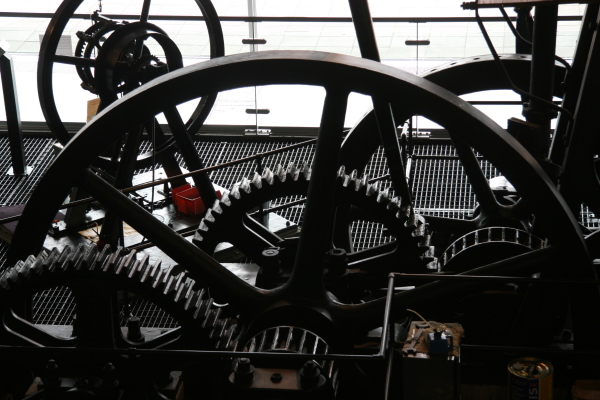Do the four jackdaws taking off across the left-right diagonal here remind you of anything?
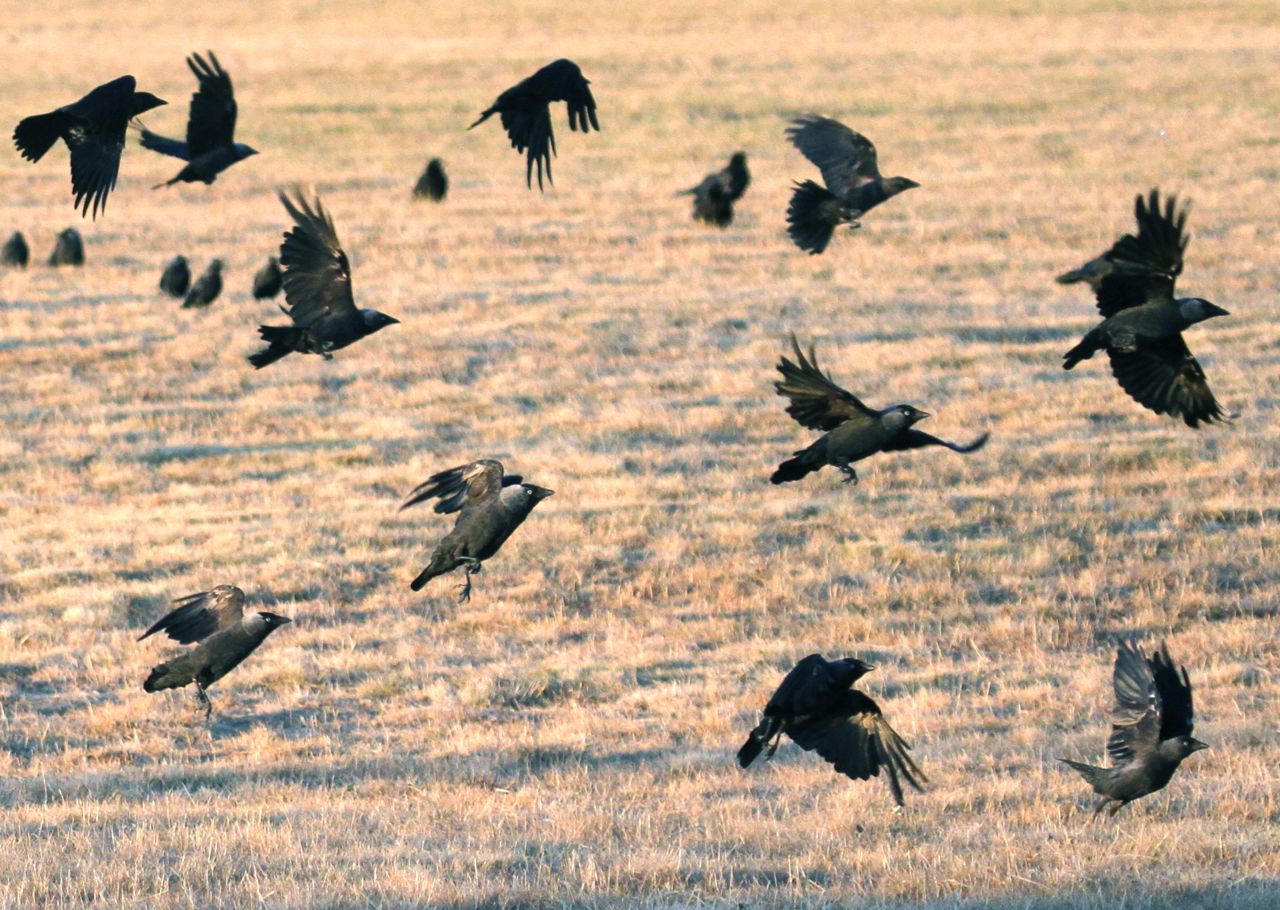
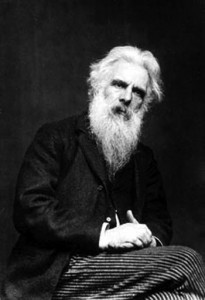
For me, the regular spacing and apparent connected motion of the birds is reminiscent of the work of nineteenth century photography pioneer, Eadweard Muybridge.
Born in 1830, Muybridge photographed many sequences of birds in flight like the one below. But he’s probably better known for his animations of galloping horses, revealing for the first time that, at certain points, horses literally fly.
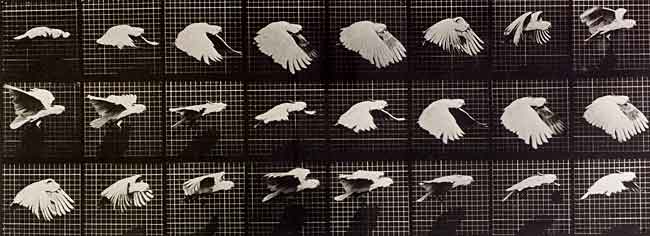
Muybridge’s techniques revealed an animal’s true motion, knowledge that until his arrival had been lost in a blur of busy limbs.
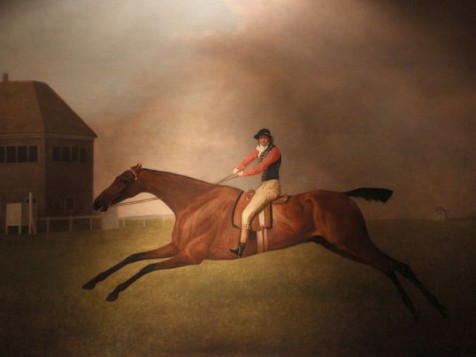
I should explain that Muybridge made sequenced compilations of stills taken of a single animal, while my picture is a happenstance capture of several birds taking off in close proximity and in apparent sequence: reminiscent of an airfield scramble or ducks flying up a wall. So I’ve got an illusion evocative of Muybridge, not a simulation, and the motions of different birds cannot be linked. (Or can they? Formation take-off? I’m reminded never to under-estimate the Corvidae family!)
By another happenstance, it turns out Muybridge was born and raised in the town where I now live: Kingston-upon-Thames in Surrey. And while he spent most of his working life in America, Muybridge left the materials of his important photographic legacy to his home town, where they reside in the Kingston Museum and Archive, five minutes walk from where I’m sitting.
A good selection of Muybridge material is normally on display in the museum, representative of his animal and human figure work, but also featuring his definitive 1878 panorama of San Francisco (link to America Hurrah website).
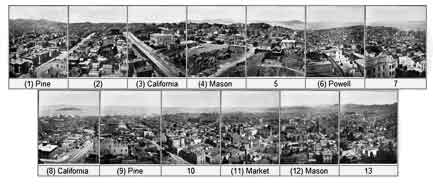
And if you’d like to find out more about Muybridge and his legacy, there couldn’t be a better time. Beginning this week, Wednesday 8th September, the Tate Britain will launch a Muybridge retrospective, and our own Kingston Museum will, from September 18th, host the Muybridge Revolutions exhibition, featuring unseen exhibits like Muybridge’s collection of Zoöpraxiscope discs. The Kingston exhibition is part of a broader range of Muybridge related activities being coordinated by Kingston University with Kingston Council.

But returning to my jackdaws in a more romantic frame. I like to ponder Muybridge walking the same routes I take today as I photograph the wildlife of Home Park; his meeting the ancestors of present-day jackdaws, deer and rabbits; and with his frustration at the unfathomable rapidity of their movements, the seed of motion photography being sown….
Update 12 October 2010
The powers that be are projecting Muybridge animations onto the side of Kingston on Thames police station. Very nice.
